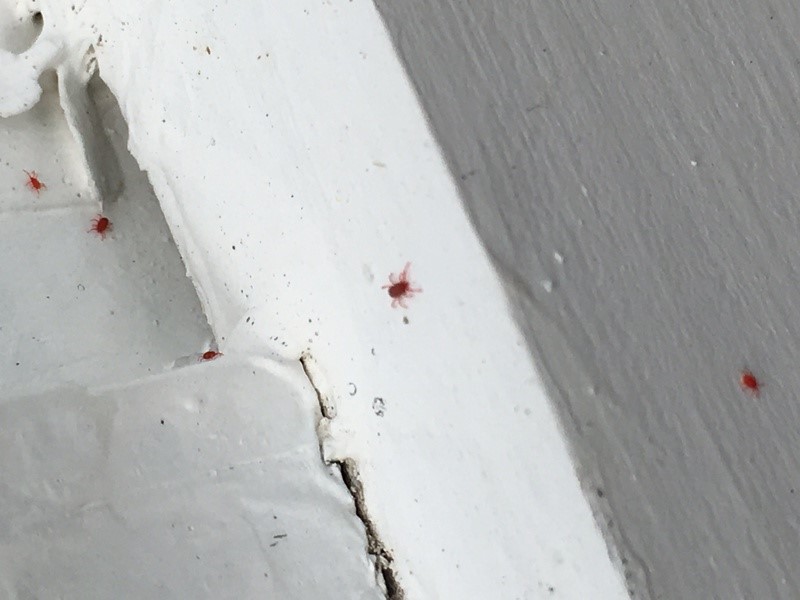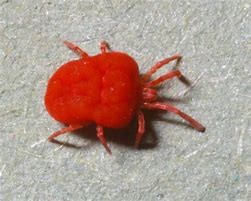
Serving Southwest Ohio and Northern Kentucky

info@TheBugBusters.net.
Attention Realtors and Loan Officers: Click the link for our online inspection sheet.
About Clover Mites
Clover Mites
Clover mites differ from many pests in that they prefer cooler weather. Clover mite activity increases as temperatures start to drop. Their activity peaks in the cooler, early spring months when they can become the greatest nuisance. Clover mites are not blood feeders, they feed on plants getting their nutrition from sucking plant juices from grasses, clover, and other plants common to lawns.
Once the hotter summer weather arrives, clover mites will lay eggs and become dormant. This dormant phase usually occurs from May until September. Any eggs that are laid in the fall will overwinter until hatching the following spring. These eggs are often deposited in the cracks and crevices around the exterior or between walls, creating issues upon hatching.
Infestations are most severe when sudden changes in weather or habitat occur. Populations typically move indoors in autumn when the plants that clover mites feed on start to perish. Additional infestations occurring in the spring are typically driven by the sudden growth of lush vegetation around the exterior perimeter. When smashed, adult clover mites leave behind a red stain. This could ruin carpets, drapes, furniture, or any other various items.
Clover mites are one of the largest types of mites that infest plants. They are reddish in color, have 8 legs, are approximately .75mm long, and oval shaped. The first pair of legs are elongated and sometimes mistaken for antenna. Their abdomen is covered in feather-like plates.
Exterior infestation

Adult clover mite

Our Perimeter Pest Control treatments are effective at deterring Clover Mites from invading your home or workplace. If you have not read our section on “Perimeter Pest Control” please click on that link now.
Dayton, OH 45401-3151
Phone 937-256-6475
info@TheBugBusters.net
Powered by w3.css